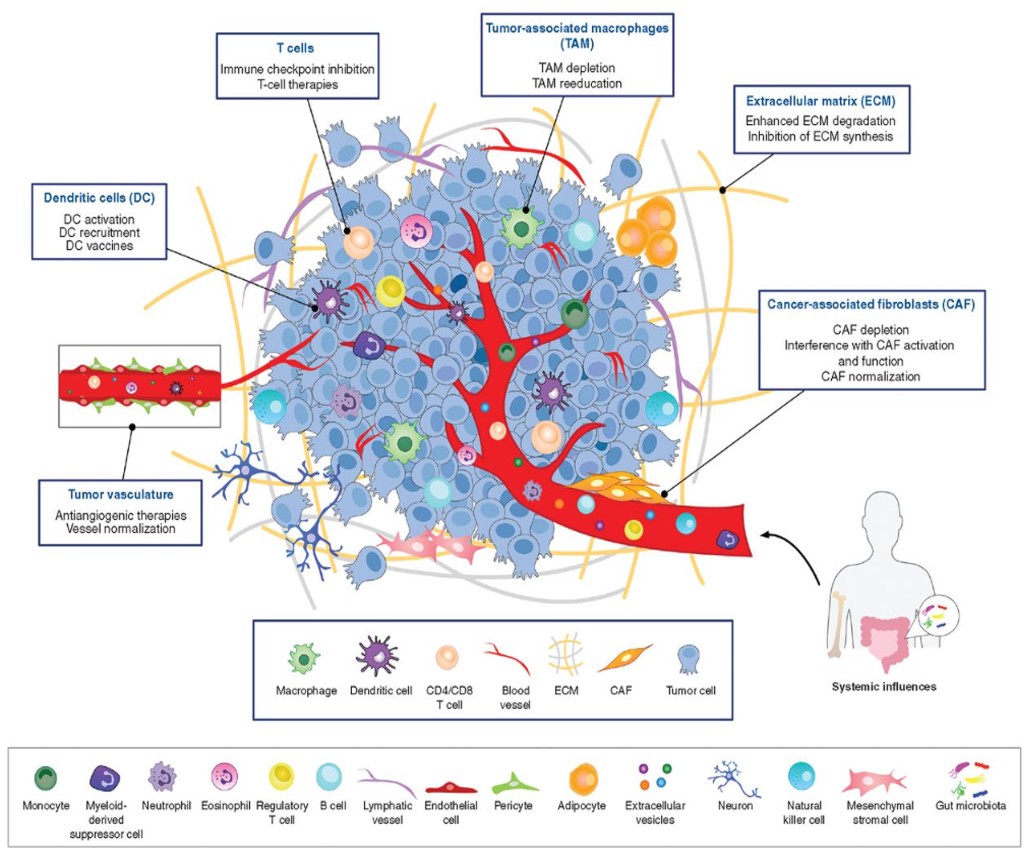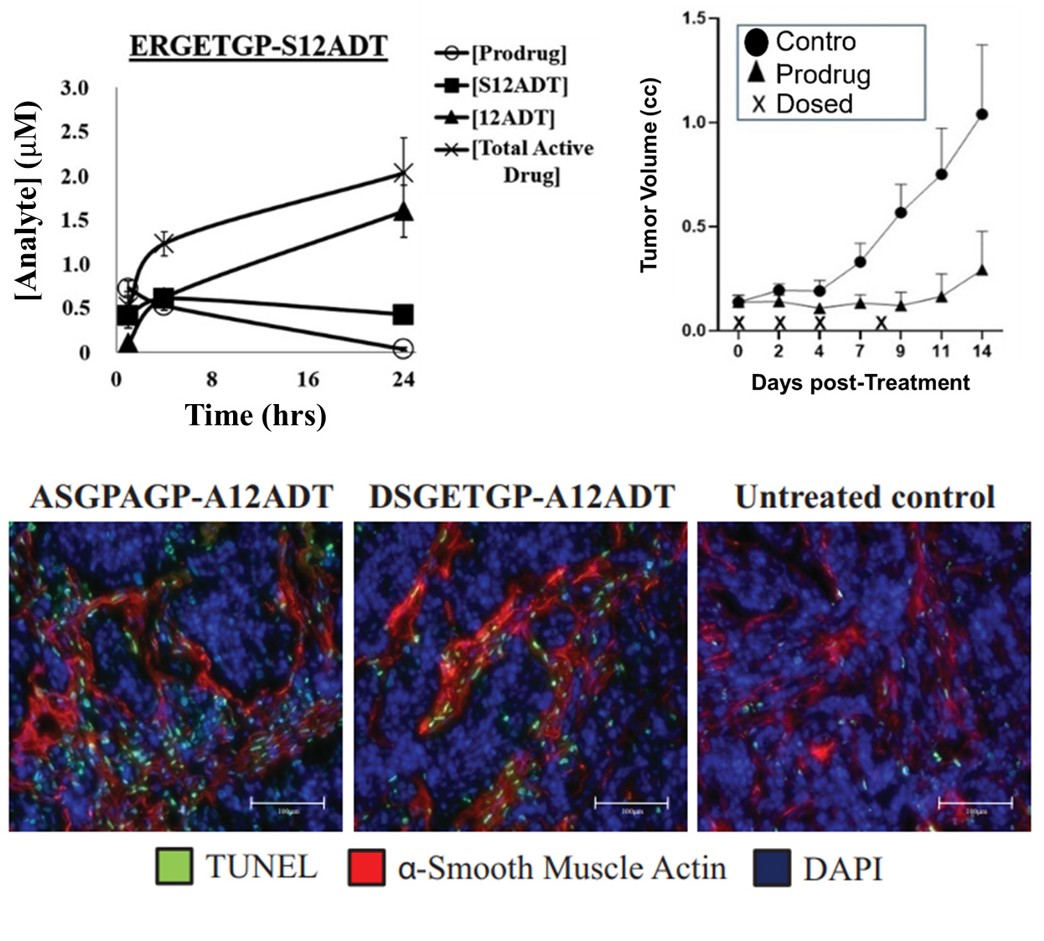Overview | TME | FAP | Epigenetics | PDX
Tumor Microenvironmentand stromal-targeted therapy
click images to enlarge:
Tumors are more than just a ball of cancer cells. In fact, they are a highly complex, dynamic, and interconnected network involving multiple different cell types, including fibroblasts, mesenchymal stem/stromal cells (MSCs) endothelial cells, and immune cells, among others. Reciprocal interactions between these various stromal and cancer cells contribute to and support cancer growth and survival through a variety of pro-tumorigenic mechanisms. Traditionally, anti-cancer therapies have largely focused on targeting the cancer cells themselves, but high mutational rates and heterogeneity within this compartment frequently lead to the development of drug resistance and subsequent disease relapse. In contrast, supporting stromal elements within the tumor microenvironment (TME) are more genetically stable as these are normal cells whose physiological functions have been subverted by the cancer via signaling pathways activated an inappropriate time or place to support essential metabolic and structural needs of the tumor, in addition to preventing recognition and clearance by the immune system. Therefore, the stromal compartment represents a more stable and largely untapped target for anti-cancer therapeutic strategies with a lower likelihood for developing resistance. An added advantage is that many of the stromal changes that occur within the TME are common across many different solid tumor types, and thus strategies targeting these elements may have therapeutic benefit across many different types of cancer.
Towards this goal, our laboratory has developed a series of highly potent small molecule and biologic prodrugs and protoxins that are selectively activated in the TME. The nature of these prodrugs/protoxins is such that they are inactive when administered systemically and therefore cause less off-target peripheral toxicity (i.e., side effects) or have an increased therapeutic index and safety profile. Once activated, however, they are highly lethal to cells in the immediate vicinity, but do not diffuse outside of the tumor once this activation occurs. This tumor-restricted activation of the prodrugs/protoxins has been accomplished by exploiting the enzymatic activity of proteases that are either unique to or selectively upregulated in the TME, such as fibroblast activation protein (FAP).


